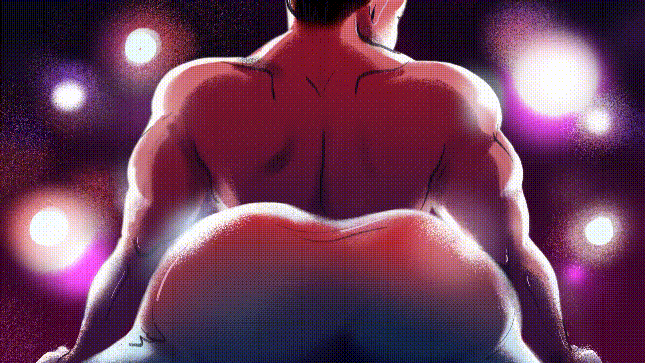From Boy Band Thrusting to the Magic Mike 'Dolphin': A Vital, Long Overdue History of Stage Humping
Latest
Illustration: Vicky Leta/GMG
A couple of years ago, I was in the second row of Magic Mike Live watching several ripped, shirtless men doing a modified cow pose on knees and balled fists. They repeatedly snaked their bodies to the ground, pelvises reaching the stage last. Later, a shirtless man thumped his fist against the stage with a coordinated thrust of the crotch. In another interlude, a man did a knee-pumping hump while traveling across the stage. I had not felt quite so giddy and breathless since watching a VHS of the Backstreet Boys in concert as a 13-year-old. These two events, separated by over two decades, had one crucial element in common: stage humping.
Recently, I came across similar moves on TikTok and was reminded, once again, of men making love to the floor. And I thought: From whence the floor grind? It was time to investigate this important topic.
When I think of stage humping, I think of a man thrusting against the floor in a modified pushup, an enactment of missionary screwing that presupposes a very long, and soon to be broken, dick. But one of the earliest and most famous examples of stage humping defies that very-long-dick-in-missionary characterization. In 1984, Madonna did her legendary “Like a Virgin” performance at the MTV Video Music Awards, descending from an oversize wedding cake while wearing a white bustier to kneel on the stage and oh-so-briefly, but controversially, bounce up and down. “It almost seems banal and PG compared to now, but at the time it was incredibly avant-garde,” says the choreographer Johanna Sapakie.
While there are infinite variations and styles of stage-humping, it all boils down to two different approaches: ‘waving’ and ‘pounding.’
In the same era, Prince became known for his writhing, sensuous humping of the stage (and the piano) during live performances and, most iconically, in Purple Rain. As of just a few years ago, fans were gathering on message boards and reminiscing about “the Mad Humper himself.” Similarly, Billy Idol and Michael Jackson premiered music videos where they lay down and rocked their crotches against the floor. In Jackson’s “The Way You Make Me Feel,” he and his dancers were shown backlit in silhouette while thrusting against the floor.
While there are infinite variations and styles of stage-humping, according to Sapakie, it all boils down to two different approaches: “waving” and “pounding.” “The waving is the sensual rolling of the pelvis and the pounding is the attack, it’s the percussion,” she explains. Those core approaches shift with changing times, by which I mean: greater amenability to humpage.
-

-

-

-

-

-

-

-

-

-

-

-

-

-

-

-

-

-

-

-

-

-

-

-

-

-

-

-

-

-

-

-

-

-

-

-

-

-

-

-








































